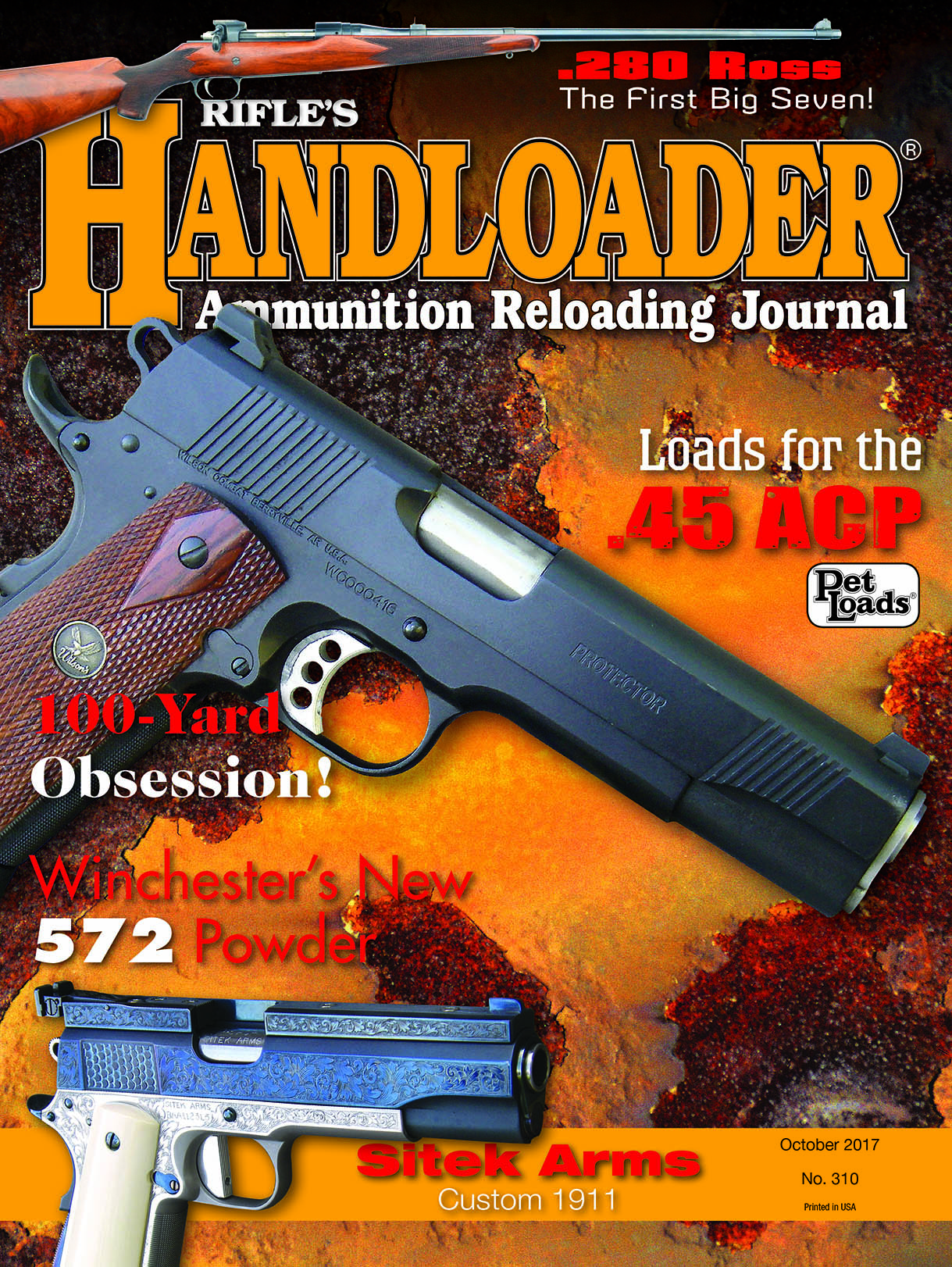100-Yard Obsession
Testing Handloads at Nonstandard Distances
feature By: John Barsness | October, 17
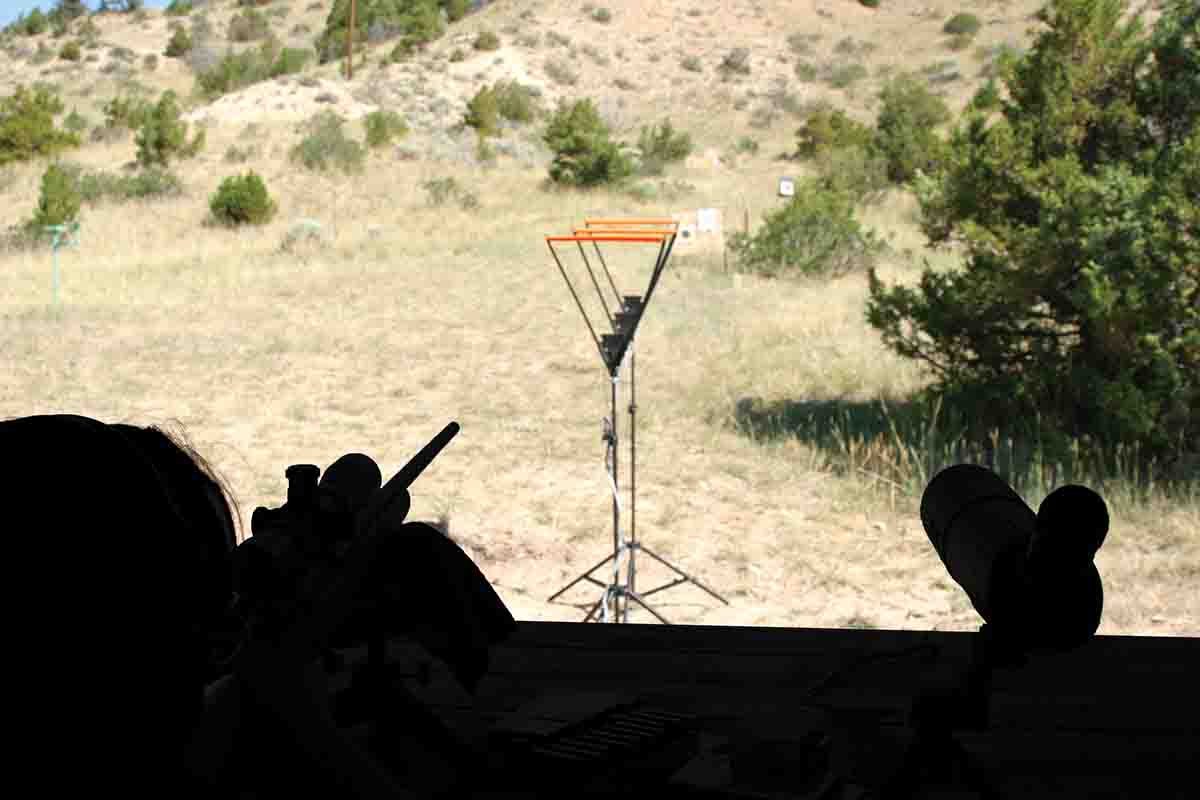
The meter, on the other hand, is a modern measurement based on light, established due to the need for more precision than cutting cloth. In 1983, the international definition became the amount light travels “in a vacuum during a time interval of 1/299,792,458 of a second.” To satisfy traditionalists, a yard was standardized at .9144 meter.
Humans often think of numbers in tens, thus 100 has become the base number for many measurements, whether centuries, percentages or cents in dollars, so it made sense to establish 100 yards as a baseline for shooting rifles. It still does in the U.S., which clings to the old “.9144 meter” as a basis of measurement. (Incidentally, two yards equals one fathom, but testing handloads at 50 fathoms doesn’t have the ring to it as 100 yards.)
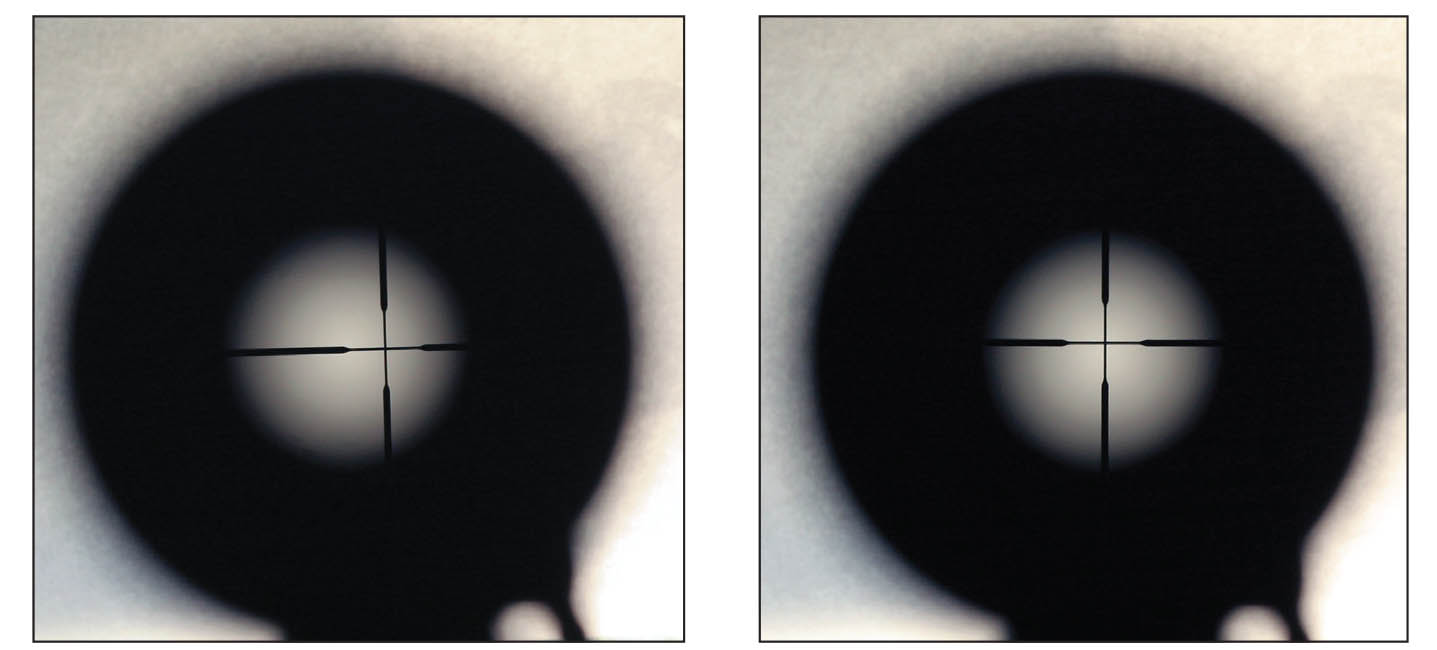
However, 100 yards has its limitations. Many shooters don’t believe wind will move bullets shot from centerfire cartridges at 100 yards, and even some more sophisticated shooters don’t realize that wind drift doesn’t increase at the same rate as range. In reality, it increases at about twice the rate: If a 10-mph side-wind drifts a certain bullet 2 inches at 100 yards, the same bullet drifts about 4 inches at 200 yards.
Handloads ideally should be tested in as close to absolutely calm conditions as possible. Unfortunately, truly calm air rarely exists outside of indoor ranges, and here in Montana it’s even rarer than in most other states. Due to writing deadlines, I sometimes simply must test rifles and ammunition when the wind is blowing, the reason centerfires are occasionally tested at 50 yards, the typical distance used for testing .22 rimfires.
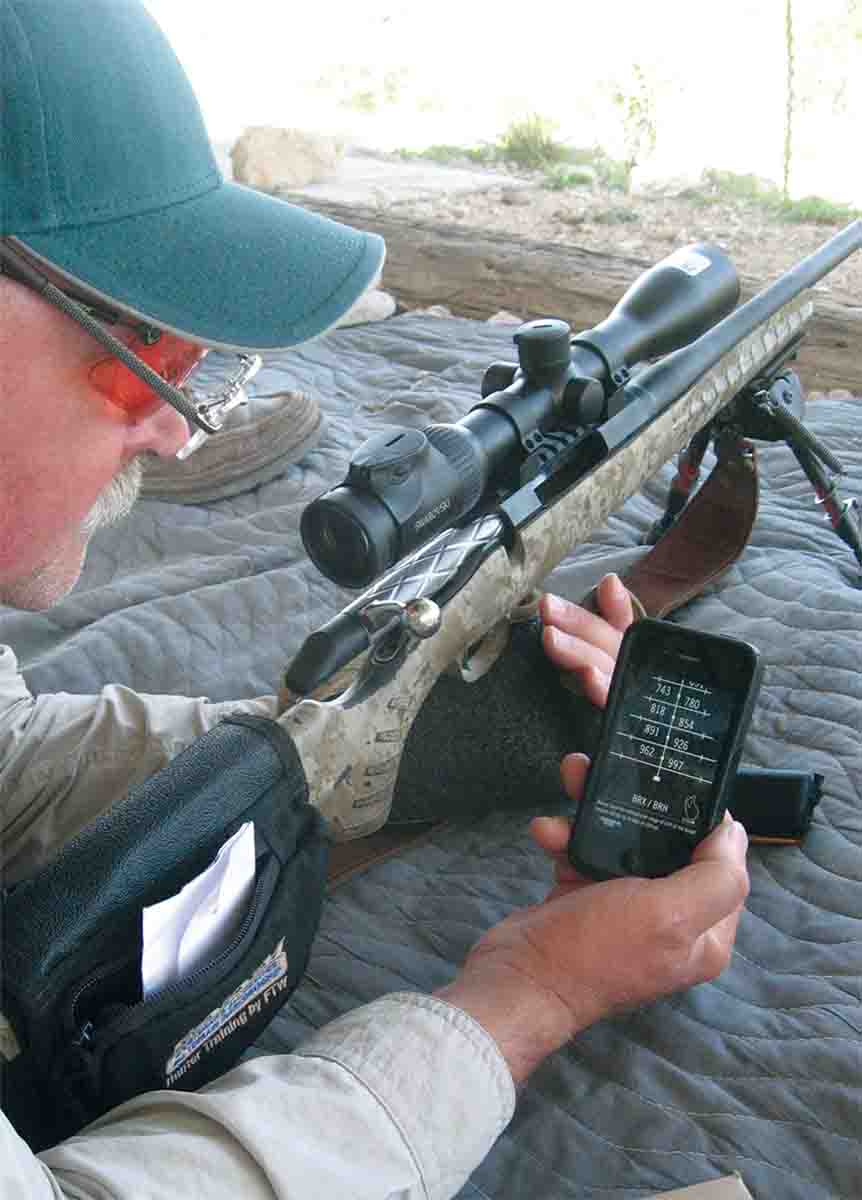
Montana’s atmosphere refused to hold still during my testing, so I decided to shoot at 50 yards, because the effects of wind drift would be considerably reduced and the results far more meaningful. For example, one of the bullets tested was the Hornady 24-grain NTX pushed at velocities up to 4,400 fps from a .204 Ruger. Many shooters would guess that much zip would virtually eliminate wind drift at 100 yards, but Hornady’s listed ballistic coefficient (BC) for the NTX is only .170, 60 percent lower than the BC of the slightly longer 40-grain V-MAX.
The Berger Bullets ballistic program indicated a 10-mph crosswind would drift the little NTX 1.16 inches at 100 yards. Since spring winds are usually gusty, drift could be anywhere between almost nothing to well over an inch. At 50 yards, however, drift in the same 10-mph wind would only be .26 inch, so groups would be far more indicative of a load’s accuracy potential.
Three charges of Ramshot TAC were tried, and five-shot groups measured .59, .38 and .20 inch as the charge was increased. Group shrinkage with heavier charges is common with many modern rifle powders, and obviously I decided to use the fastest load!
The biggest problem with testing at 50 yards is scope parallax, which can cause far more error than wind drift. The scope on my .204 fortunately has a side knob for parallax correction, but most scopes up to 10x aren’t parallax-adjustable. Unless specifically designed for short-range shooting, parallax is usually set at the factory for 100 to 150 yards, resulting in some error at 50 yards.
There’s an easy solution: If we place our aiming eye directly behind the center of the scope, every time, there is no parallax, because by definition, parallax is caused by “the apparent displacement of an observed object due to a change in position of the observer.” Centering the eye is pretty easy. Move your head back from the scope until the edges of the field of view black out. The visible circle inside the blacked-out edges is the exit pupil of the scope, and when the reticle appears centered in the exit pupil, your eye is centered behind the scope. I’ve used this trick hundreds of times when shooting at any range where parallax occurs, and it works.
Excellent reasons also exist for test shooting beyond 100 yards, the most obvious being determining the actual trajectory of the load. This can differ considerably from trajectory tables that, before home computers became the rule rather than the exception, were published in the back of just about every reloading manual.
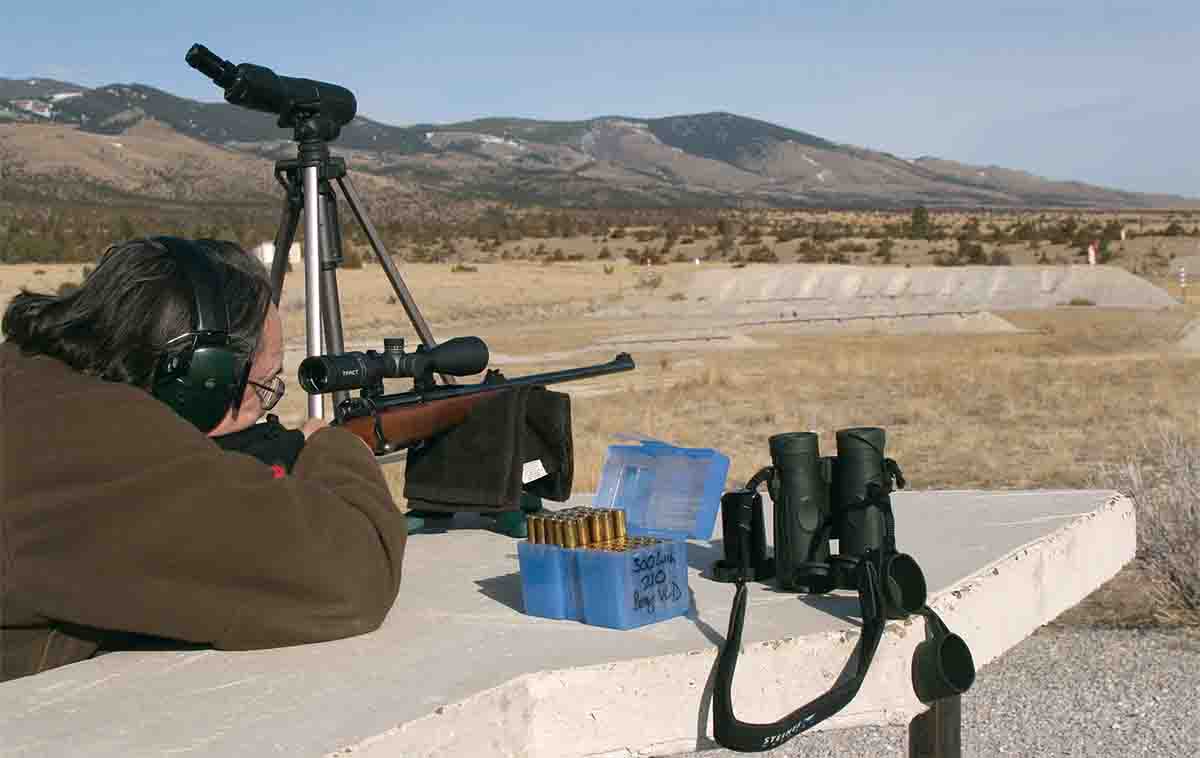
The first reason for possible error is the numbers are calculated under standard atmospheric conditions, 59 degrees Fahrenheit at sea level. Most of us never shoot at sea level, and at 59 F only occasionally. For example, let’s use the .30-06 with a 180-grain bullet with a BC of .400 – typical of flatbase, 180-grain spitzers. At a muzzle velocity of 2,700 fps with the scope mounted 1.5 inches over the bore, when sighted in 2 inches high at 100 yards, the bullet will land about 24.5 inches below point of aim at 400 yards in standard atmospheric conditions. Now let’s say we’re hunting at 0 F at 1,000 feet above sea level – not unusual in the northern U.S. or southern Canada during deer season. The bullet will then land about an inch lower at 400 yards. If hunting 8,000 feet above sea level at 70 F, common in the Southwest, the bullet will actually land 2.5 inches higher than in standard atmospheric conditions.
Next let’s say the bullet company exaggerated the BC of its 180-grain spitzer, claiming .475. (This often happened back when every handloading manual included trajectory tables, because many BCs were optimistically based on calculations using a “form factor” rather than range results.) A bullet with a BC of .400 will drop about an inch more than the trajectory calculated with a BC of .475.
The printed tables I’ve seen base trajectories on a scope centered 1.5 inches above the bore. Today, hunters often use larger scopes, and setting them 1.75 or even 2.0 inches above the bore isn’t unusual. The difference between a scope mounted 1.5 inches and 2.0 inches high also makes a little difference at 400 yards; with our .30-06 load, about .5 inch.
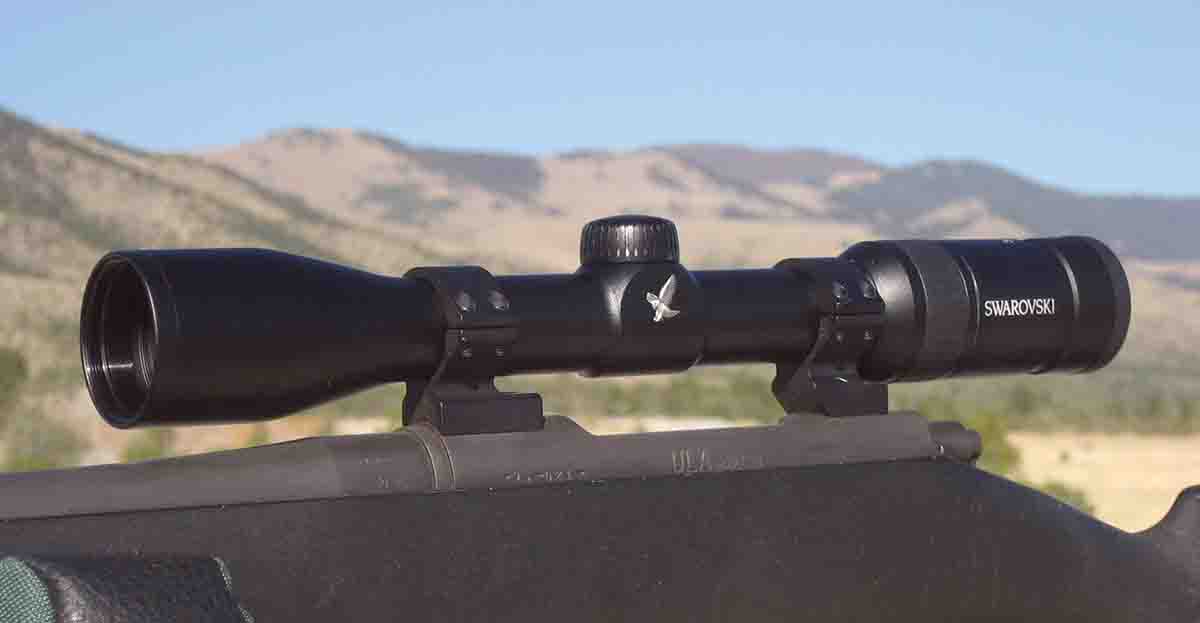
Add all these factors together, and there’s the potential for 7 inches of difference between theoretical elevation and where a single shot might land at 400 yards. Add in some shooter error, and a hunter can easily miss the vitals of a deer.
Now, one way we to reduce these errors is by using a computer ballistic program instead of old-fashioned charts, allowing us to enter the correct numbers for atmospheric conditions, scope height and the correct BC – which also varies with velocity. Actual range-tested BCs can be found in Bryan Litz’s fine book Ballistic Performance of Rifle Bullets (www.appliedballisticsllc.com), and I’ve used his numbers many times when calculating trajectory. When combined with a computer ballistics program, they’re normally sufficient for consistent hits on a 6-inch gong at 400 yards using standard “set-and-forget” scopes with simple plex-type reticles, and good to at least 600 yards when using a scope with an elevation turret designed for dialing in range.
If a shooter doesn’t have computer access and must rely on printed trajectory tables, then he should do some shooting at any range over 250 yards to test his rifle in typical field conditions. (Of course, if you never shoot beyond 250 yards, none of this matters, even on fairly small varmints.)
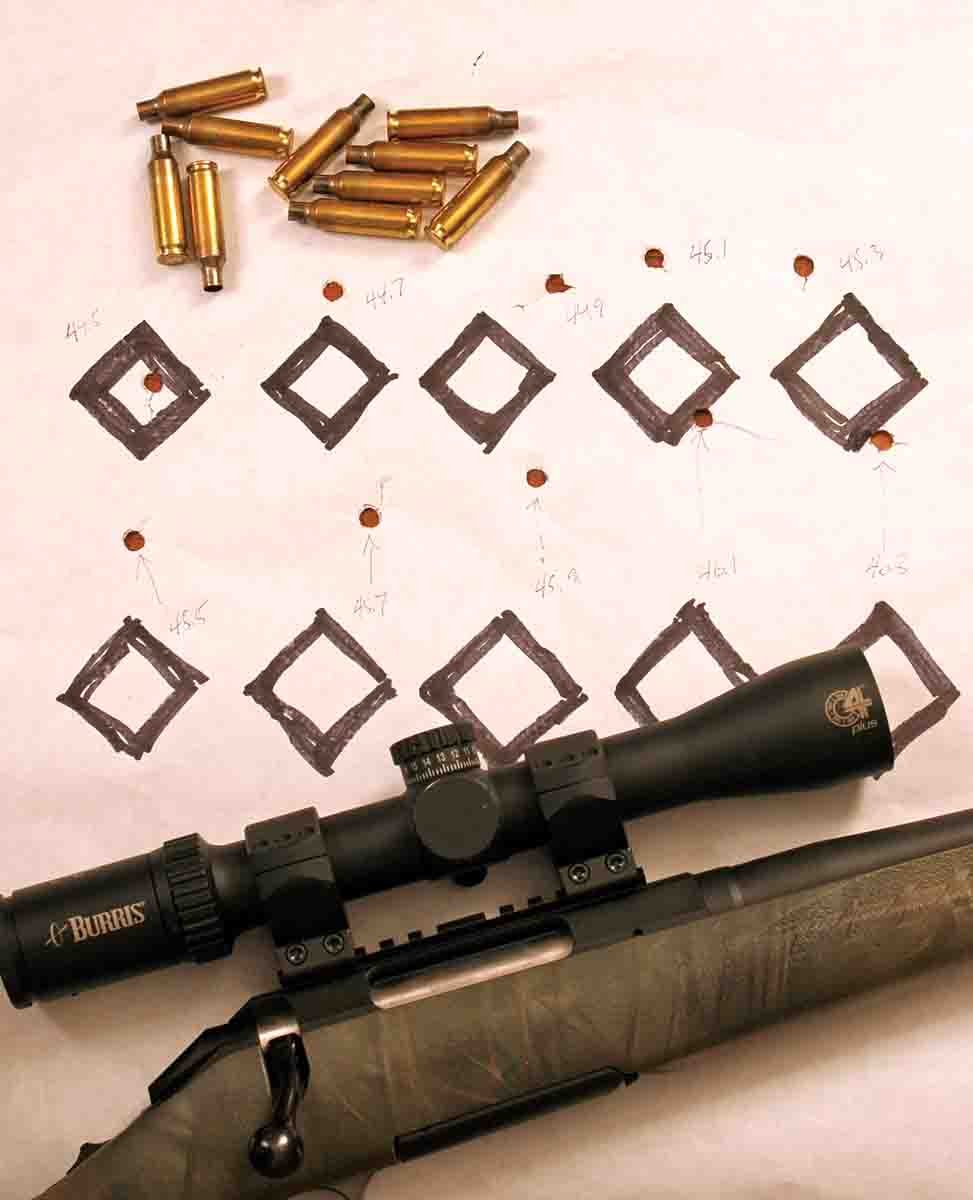
Some handloaders use a “ladder” or “Audette” test at longer range, developed by gunsmith and target shooter Creighton Audette, who wanted a work-up method defining the exact powder charge for the least amount of elevation error at longer ranges. Audette’s test involved shooting a series of rounds with powder charges varying by fractions of a grain, at ranges well beyond 100 yards. This usually results in a ladder of bullet holes several inches high with some of the bullet holes clustered closer together, indicating the approximate powder charge with the least variation in barrel vibration.
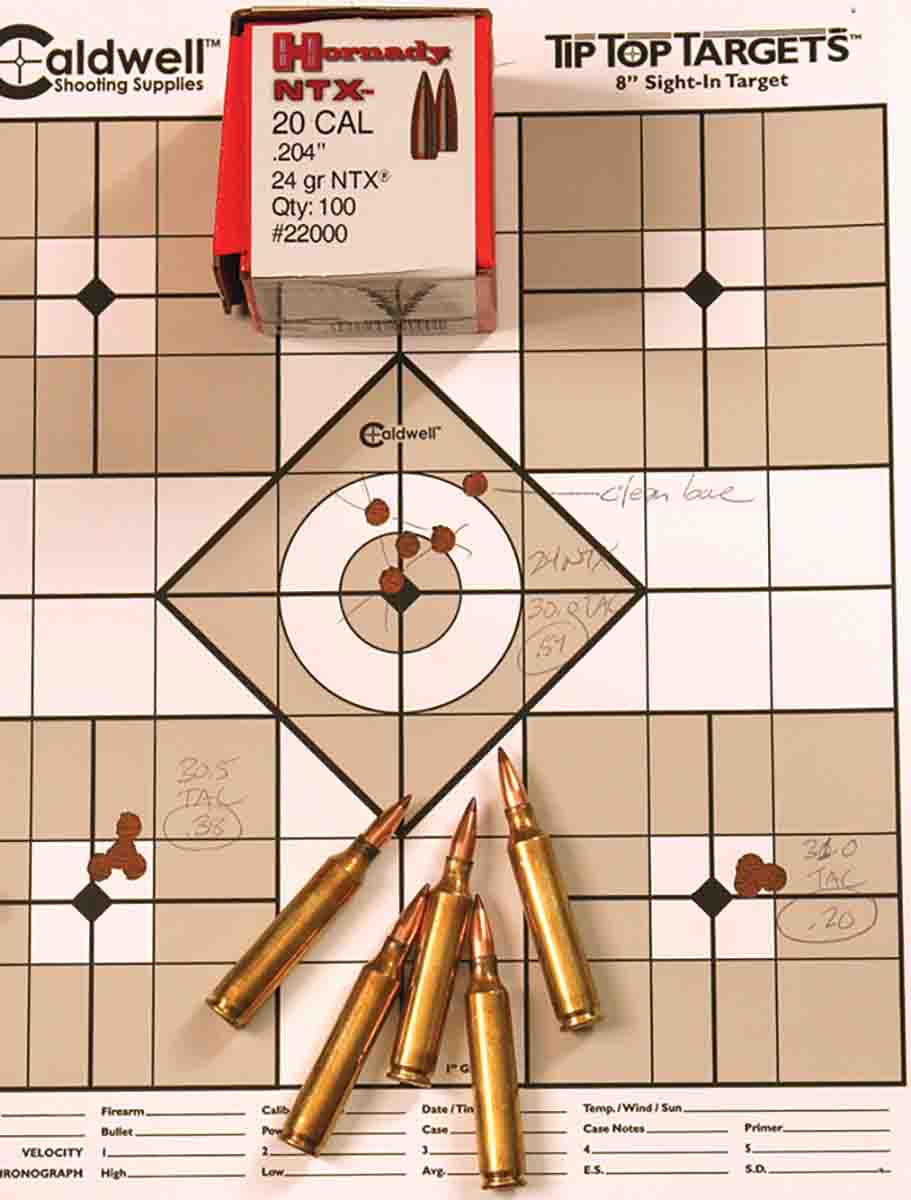
I also usually shoot a couple of groups at longer ranges before deciding if a ladder test is necessary. Often it isn’t, even though the original load work-up was done at “only” 100 yards; and even during a ladder test I don’t usually shoot at really long ranges due to the possibility of wind error.
However, unless your powder’s relatively temperature-resistant, a ladder test done at a different temperature than would be typical during the handload’s intended use would make results invalid. One example took place a couple of winters ago at the Binkley range.
I often test longer-range, big-game loads during winter on calm mornings around 35 F, because that’s about the average daily temperature during big-game seasons in Montana. The range also happens to be a little more than 4,000 feet above sea level, also about average for Montana hunting. Even if the temperature during a specific hunt is 0 or 70 F, or the elevation is 2,500 or 7,000 feet, the point of impact at 35 F at 4,000 feet will not vary enough to make a significant difference on a big-game animal at any range I shoot in the field.
On that February morning, several new loads were gong-tested at 400 to 600 yards. A friend also happened to show up to run a ladder test for a load he planned to use for F-Class competition the next summer. The powder he chose wasn’t particularly temperature-resistant, but he had bought a bunch at about half the normal price so decided to use it anyway, even though the morning was far cooler than it would be during any summer shooting competition. He essentially wasted a bunch of time and money, because even half-price powder costs something, and he had paid full retail for the bullets. Testing rifles at ranges other than 100 yards can help considerably, but shooters still need to test in conditions when the results will be meaningful.


